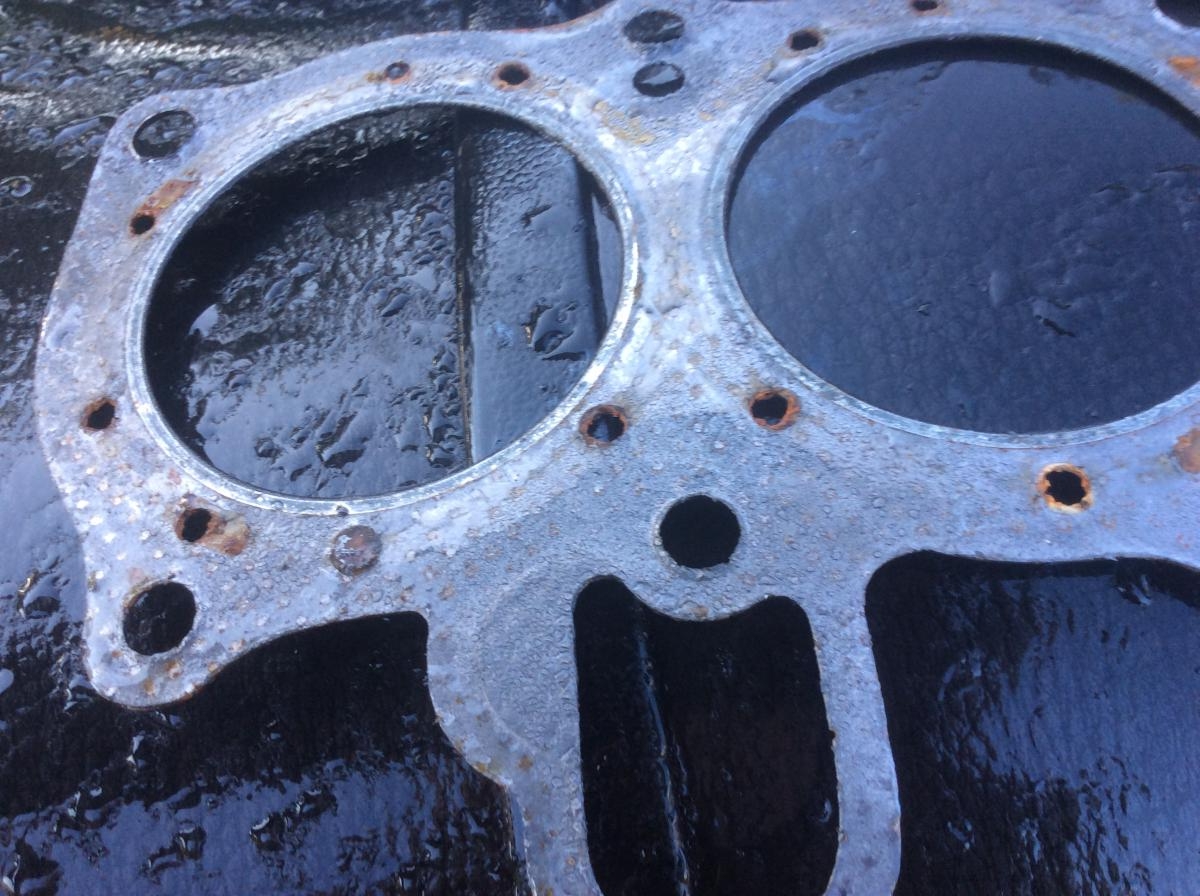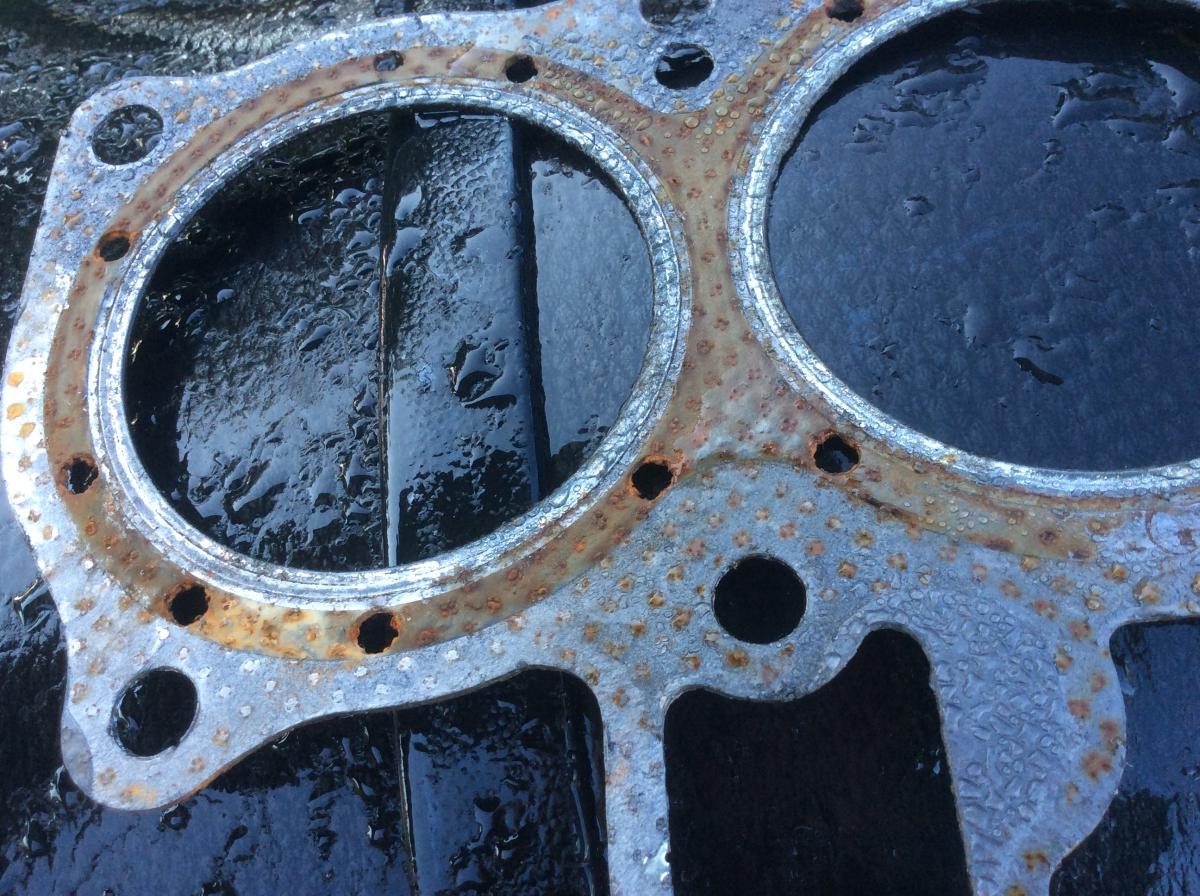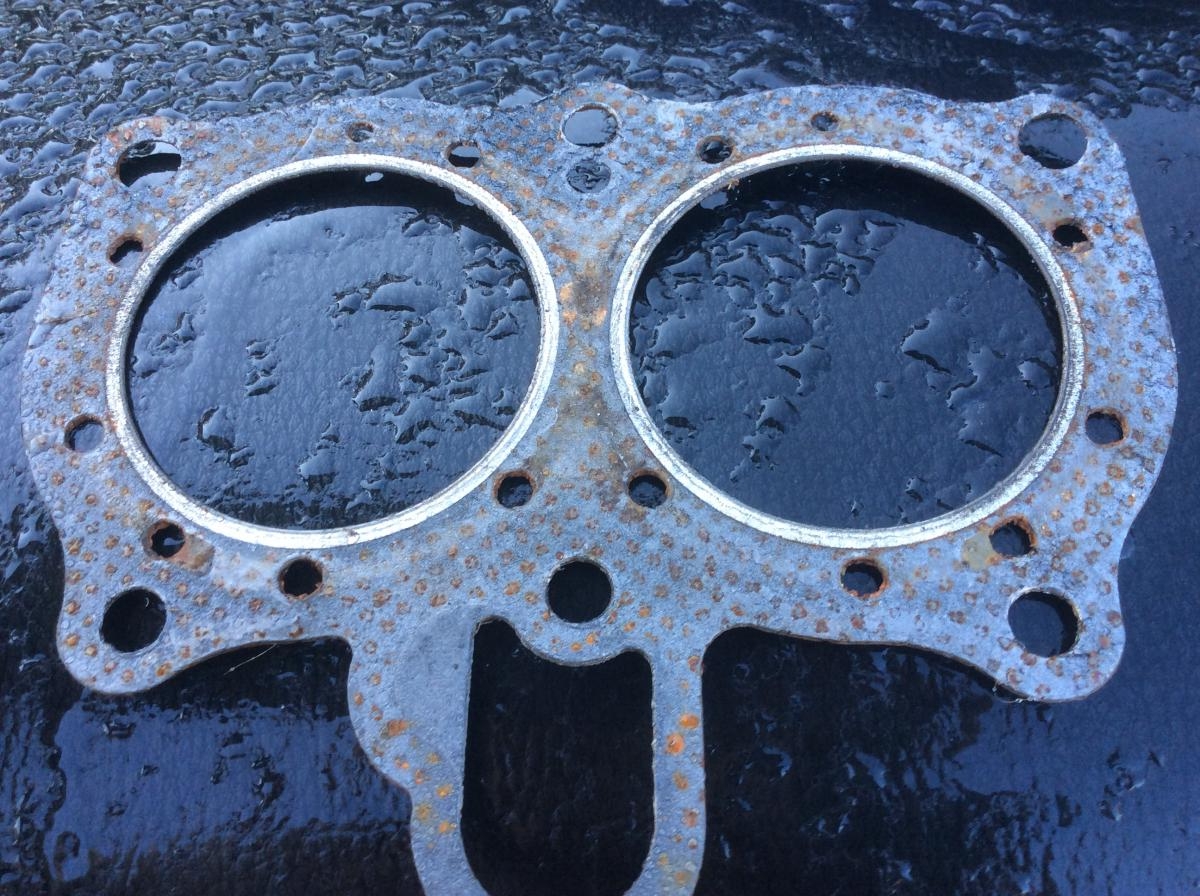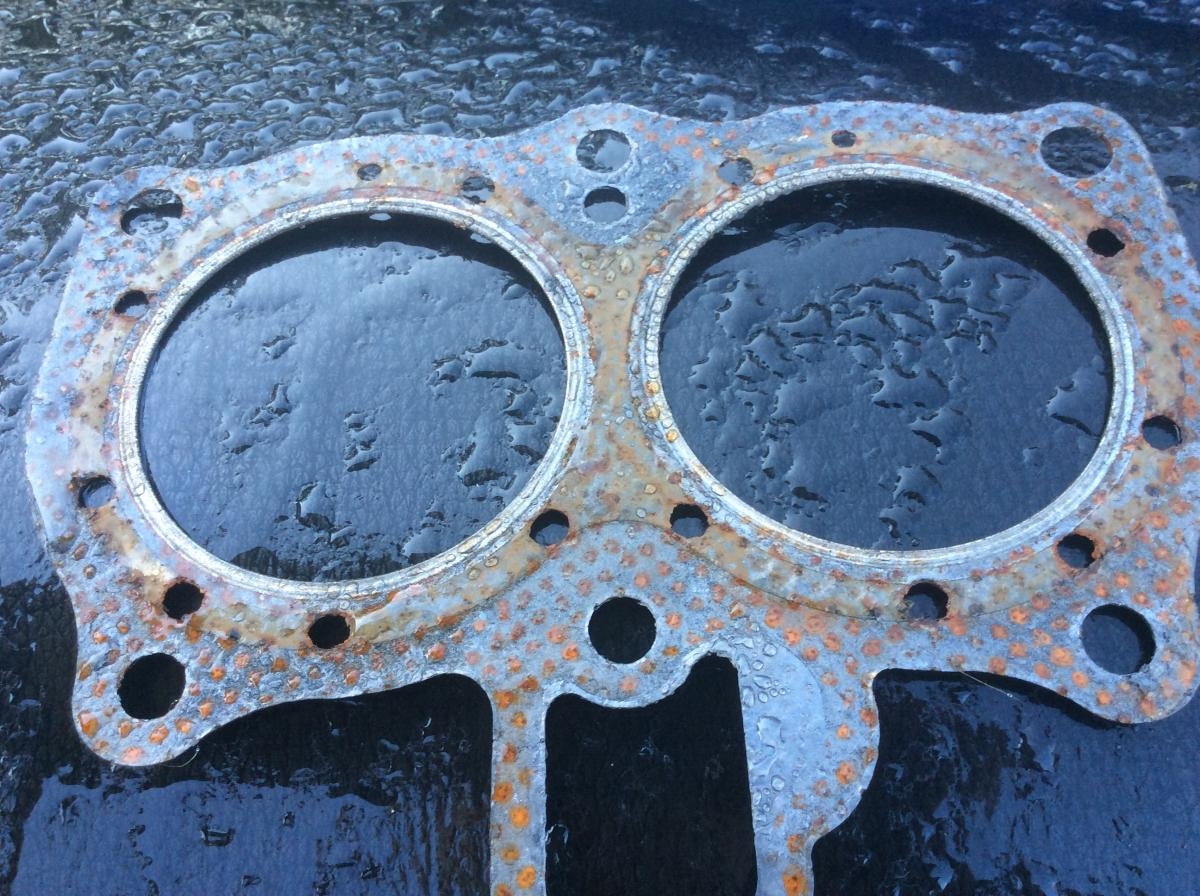Pics

This is the head side of the gasket ...one thing you can see is this gasket had one hole not punched out out ....sheesh I should have seen that :doh: ...another point is ...you can see the dimple effect here ..and this is on the head side that’s all metal backing ...the way the goo gaskets are made it’s like a bed of nails ...not a good thing when sealing is the purpose here sheesh ....

Ok this is the block side of this gasket ...you can really see the dimple effect big time ..also you can see how the gasket is really swelled up ...this is like the poorest condition and excuse for a head gasket and it’s purpose I’ve ever seen ...I can’t believe this hasn’t like come to me till now ...I’ve dealt with these head gaskets a long time ..I feel stupid not seeing this before

This is head side of other gasket and to me really shows it all ...in this gasket between the cylinder you see flaking going on or melted out ...something ...it’s interesting to note this is at place of highest pressure and from both cylinders and about the furthest away from the closest head bolts ...

The dimple effect on the make up of this gasket is an engineering stupidity of the highest order ..the goo make up of this gasket that doesn’t stand up to coolant is at the same level ...you can see the swell ness everywhere in this block side pic and separated surface ..this gasket was not that old ....this alone is the problem the hooch bike is having in my opinion..in hand it was obvious this gasket was leaking exhaust gas in the cooling system ..it started out barely to increasing as it went ...even Honda brand gaskets are made this way ...it’s a gamble for sure with the gaskets I’m trying now ....but it my opinion so far the 8$ gasket I’m trying beats the the best Honda gasket out there ...time will tell ...making a bed of nails gasket that’s make up doesn’t hold up to condition of the motor and coolant to me is just flat out obvious in my opinion
Oh this is very important gaskets here are barracuda brand gaskets ...not Honda brand ..I think this is Sabre brand ...but make up is very similar ...especially the dimple effect deal ...goo make up could be different
This is the head side of the gasket ...one thing you can see is this gasket had one hole not punched out out ....sheesh I should have seen that :doh: ...another point is ...you can see the dimple effect here ..and this is on the head side that’s all metal backing ...the way the goo gaskets are made it’s like a bed of nails ...not a good thing when sealing is the purpose here sheesh ....
Ok this is the block side of this gasket ...you can really see the dimple effect big time ..also you can see how the gasket is really swelled up ...this is like the poorest condition and excuse for a head gasket and it’s purpose I’ve ever seen ...I can’t believe this hasn’t like come to me till now ...I’ve dealt with these head gaskets a long time ..I feel stupid not seeing this before
This is head side of other gasket and to me really shows it all ...in this gasket between the cylinder you see flaking going on or melted out ...something ...it’s interesting to note this is at place of highest pressure and from both cylinders and about the furthest away from the closest head bolts ...
The dimple effect on the make up of this gasket is an engineering stupidity of the highest order ..the goo make up of this gasket that doesn’t stand up to coolant is at the same level ...you can see the swell ness everywhere in this block side pic and separated surface ..this gasket was not that old ....this alone is the problem the hooch bike is having in my opinion..in hand it was obvious this gasket was leaking exhaust gas in the cooling system ..it started out barely to increasing as it went ...even Honda brand gaskets are made this way ...it’s a gamble for sure with the gaskets I’m trying now ....but it my opinion so far the 8$ gasket I’m trying beats the the best Honda gasket out there ...time will tell ...making a bed of nails gasket that’s make up doesn’t hold up to condition of the motor and coolant to me is just flat out obvious in my opinion
Oh this is very important gaskets here are barracuda brand gaskets ...not Honda brand ..I think this is Sabre brand ...but make up is very similar ...especially the dimple effect deal ...goo make up could be different











































